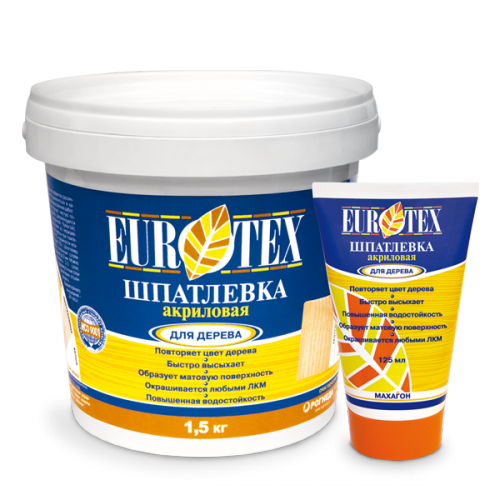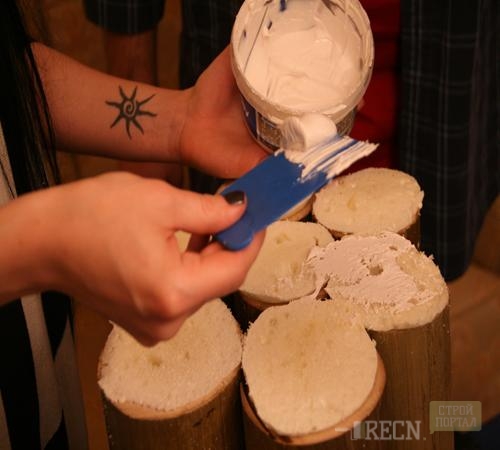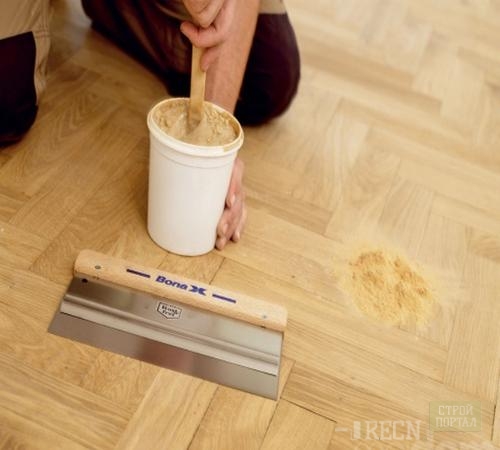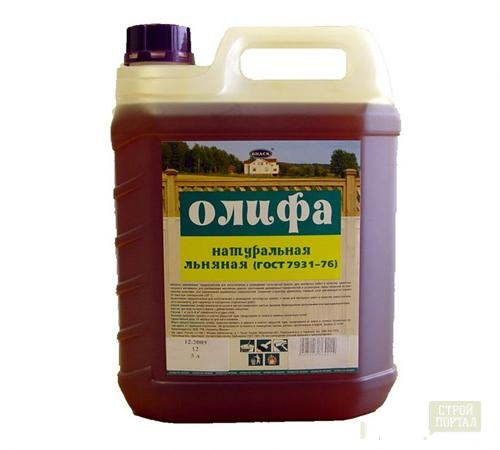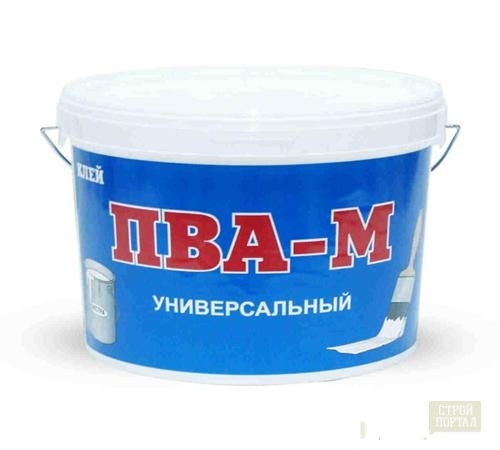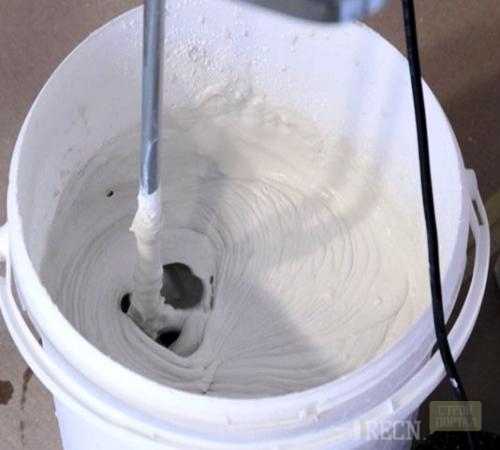
Wood putty do it yourself Building materials
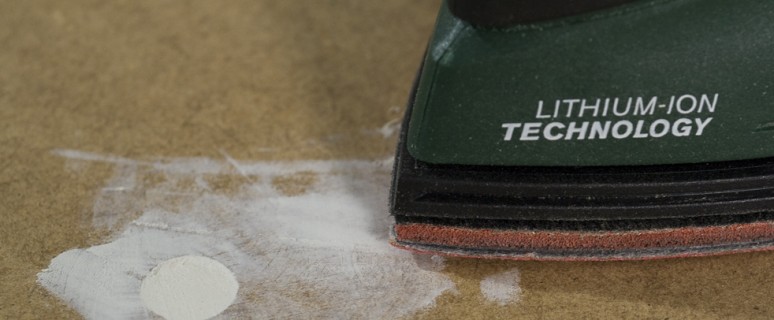
Such material as a putty was invented in order to eliminate small defects from the surfaces - chips, cracks and other damage. The putty is first applied, filling it unevenness, smooth, wait for drying and grind. But, unfortunately, not always the purchase agent has proper quality. Sometimes it is better to make it yourself.
Content
What formulations come on wood putty?
Consider more existing groups. These include both internal and outer spacing for wood:
1. Oil-glue. It includes:
- olihu
- oil varnish
- additional adhesives,
- pigments.
Best of all, such a putty is suitable for working with windows and doors of wood. It is used in external work, as well as indoors where excessive humidity is present.
2. Adhesive putty. It is a glue-based melting, filled with various additives that give it certain properties. As a plasticizer, a small amount of oil is introduced into the composition.
3. Nitrošpaklevka. The resins and ether cellulose are bred in a solvent and then fillers are added, which improve the quality of the material. Such a means dries quickly, but is made only in an industrial method.
4. Gypsum putty in different variations are the most common today. It plastic and has high adhesion. Good for both basic and finishing layer. It is worth noting that the use of this species is appropriate only if it is necessary to put the entire surface, otherwise it will not be possible to achieve a homogeneous coating.
5. Latex and acrylic putty. They are a little better than the previous look, and at the cost exceeds it several times. The layer should not be more than 2 mm, otherwise cracks will appear when dried.
Qualities that should be put on a wood putty
In order to perform work, without applying harm to its health, the selected putty must have a number of properties, for example:
- good hitch with a surface;
- plasticity, easy apparent and distribution over the surface of the material being processed;
- rapid drying;
- lack of toxic evaporation;
- low cost along with decent quality;
- smooth structure;
- lack of shrinkage;
- grinding;
- lack of cracking and crumbling after drying.
Types of spacure layers
The putty is designed for the base or finishing layer. In addition, there is a universal putty:
- The spacure used for the base layer has a heterogeneous structure, because For strength to it add various large-dispersed fillers. Its layer, if necessary, can reach thickness of several centimeters, and in drying it becomes rough.
- The finishing layer is applied to the dried base. Such a putty has more homogeneous consistency and allows you to get a perfectly smooth surface after grinding. By sticking wallpapers usually make 1-2 layers, under painting - 3-5.
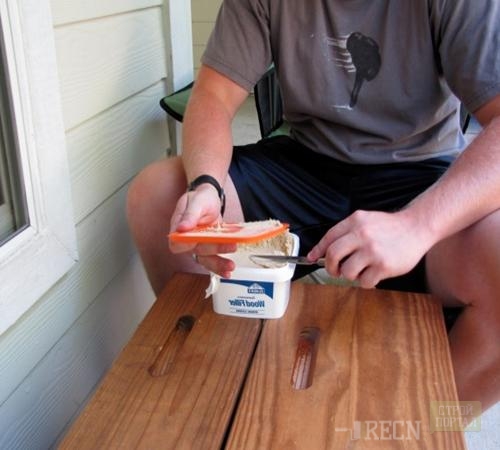
Why do you need homemade putty?
Industrial wood putty, buying in any store, has a number of indisputable advantages, such as easy application, rapid drying, perfectly smooth and smooth surface. But she has a serious disadvantage, which sometimes cross the existing benefits, for example:
- when processing large areas, a spacure on a tree, the price of which is not low, costs very expensive;
- small strength;
- doubtful quality.
Tree - material reacting to temperature differences. In the warm environment it expands, in the cool - narrows. For this reason, with time, cracks may appear on the shasphawn and painted surface.
In such cases, there is a need for a putty, which would be strong enough and at the same time possessed elasticity, did not crack when the tree begins to deform under the action of ambient conditions.
Wood putty do it yourself
Homework can be made at home using various materials in several ways. Consider each of them:
1. Putty on the basis of olifa and oil. For her preparation you will need:
- terpetinic and flaxseed oil. The first must be taken 60 gr, and the second is 280 gr;
- pumbe powder or perlite - 30 grams;
- casein - 20 grams;
- ordinary food gelatin - 20 grams;
- bura - 12 grams;
- ammonia 18% - 18 gr.
Take oil and mix them with pimples. Add 290-300 g of water to a mixture, as well as the remaining ingredients and achieve its homogeneity by stirring and heating on a water bath at 90 degrees. When the mixture turns into a paste, remove it from the stove, cool and use for an hour, because it is on such a period of time the composition saves the operating properties. The above proportion is only approximate. It is not a fact that the quality of the resulting putty arrange a concrete master fully. To achieve ideal, it is necessary to experiment with the number of ingredients that are part of the ingredients.
2. Putty from chalk and glue PVA. This is a very simple way to manufacture finishing putty:
- take the chalk and enter the PVA glue into it, thoroughly mixing and breaking the lumps;
- add it until the mixture reaches a sour cream or pasty consistency,
- if you do not need an finish, but basic putty, then add more and small sawdust here, this mixture has all the necessary properties, its only minus is long-term drying time - no less than a day.
3. Putty of chalk and water-soluble varnish. This recipe is similar to the previous one, only glue in it replaces the cheapest, water-soluble varnish. The putty is manufactured in the same way as in the previous description: the elements of the composition are mixed and adjusted to the consistency of sour cream. If accidentally happened too thick, dilute it with a small amount of water before you start using. This method also allows you to obtain a finish putty, in which the sawdust is added in the case of need. It is better to begin to start in the evening to use the next day. It is necessary so that the sawdresses are as follows and blundered. Capacity should be kept closed. Such a putty will dry much faster than the peak mixed on Clee - from 2 to 8 hours, and also has greater durability and elasticity. If you want it to be color, add a pigment for water-soluble paint. Such a mixture is allowed to work even at the pre-treated primer chipboard.
4. Putclone with nitroqua. In this case, the chalk and sawdust are diluted with nitroloma. The resulting mixture will dry even faster, but it has a sharp and stable smell, which is hardly useful for human health. It is possible to give color to it using either dry gouache or pigments for concrete. They must be dissolved in a 647 solvent, introduce into a putty and very diligently to wash.
All kinds of homemade putty need to be made immediately before use and do not store residues, because After a short time, the mixture or will lose its qualities or simply dried.
Having decided to independently make a putty on the tree, the photos presented on the page, use as illustrations of the process.




